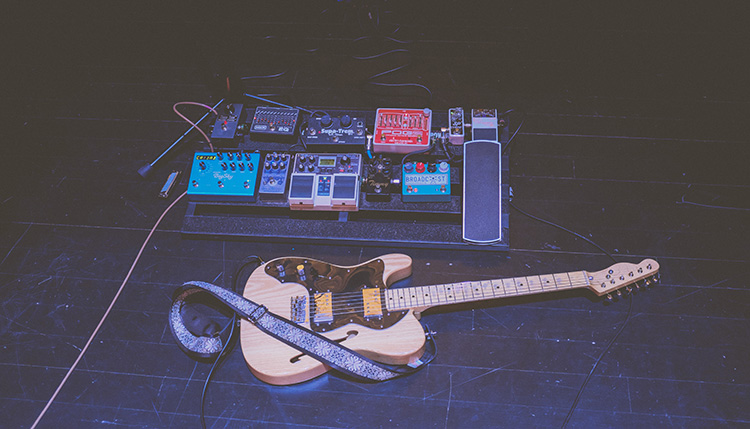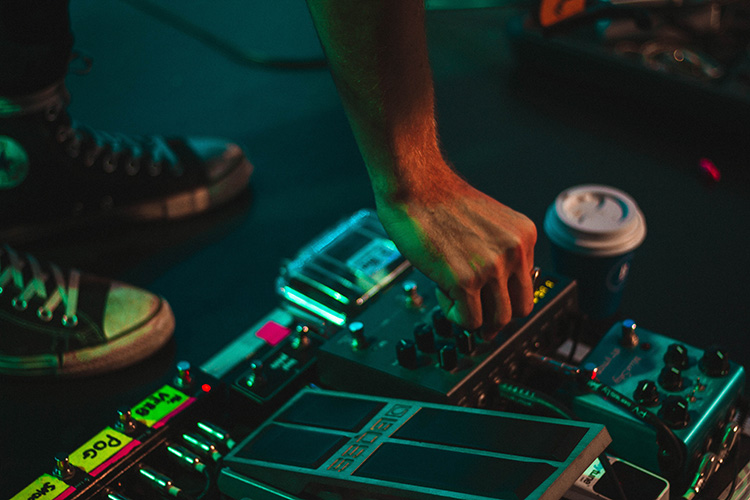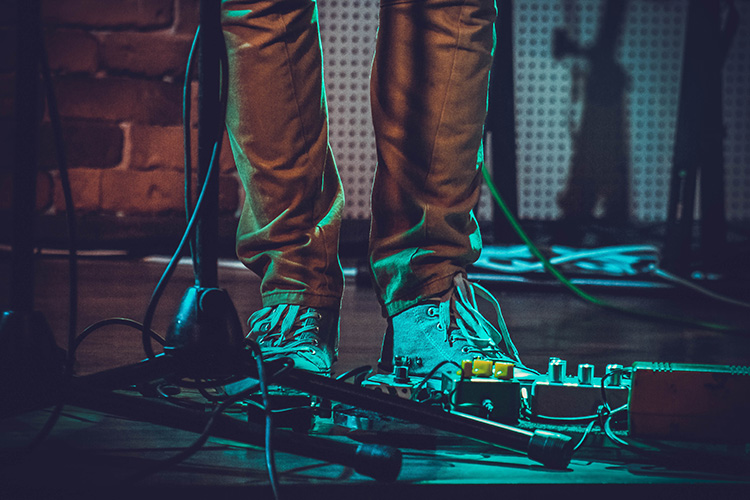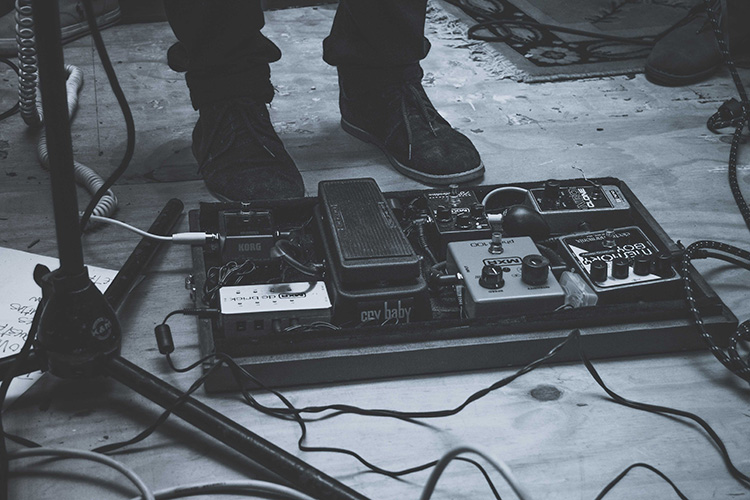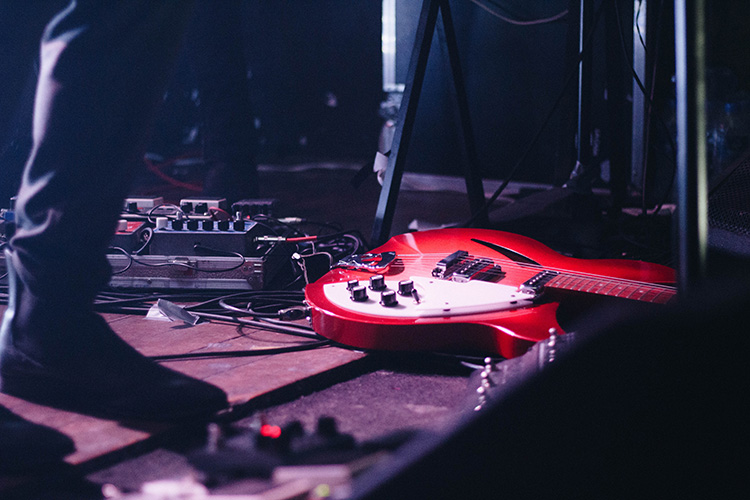Types of guitar pedals unlock a whole world of tonal possibility for us as guitarists. In this guide we’re going to tell you everything you need to know about guitar pedals.
Over 100,000 guitar-learners get our world-class guitar tips & tutorials sent straight to their inbox: Click here to join them
In this free lesson you learn:
- 20 pedal types that every guitarist must-know.
- Our top 10 favourite guitar pedals of all time.
- 5 easy tips which will transform your guitar tone and make you sound amazing.
An Intro to Types of Guitar Pedals
The guitar pedal world is a universe all its own inside the guitar world.
- Every type of musical (and non-musical) effect you can think of has at some point been packaged into a guitar pedal and sold to the music world.
- Guitar pedals are a fantastic way to help us create new sounds with our instrument and explore the sonic universes inside our head.
- Be warned before we jump into this article – Once you’re exposed to all of the unique types of guitar pedals, you’ll be fascinated and (most likely) become obsessed.
Don’t say we didn’t warn you. Now let’s talk tone.
Why Should We Use Guitar Pedals?
Different types of guitar pedals offer us different approaches to our guitar tone.
- These pedals can be organised into broad categories based on their function.
- One of the best parts about being a guitarist (besides playing the guitar) is building your own pedalboard.
Once we have educated ourselves on what different types of guitar pedals do and how they function, we can combine and wire them together to help us construct our individual guitar tone.
Learning about different types of guitar pedals is beneficial as they help us tap into a world of tone beyond our amplifiers.
Guitar pedals are fantastic as they can be triggered off and on at will, and many guitarists will perform with a pedalboard of some sort at the front of the stage to help them better control their sound.
Guitar pedals give us control over our sound and dynamics, and as guitarists we all would like a bit more say in how we sound.
Let’s break down the different types of guitar pedals below:
Types of Guitar Pedals: Gain Effects
Gain effects control our loudness, as well as how much our signal distorts and breaks up.
- Often simply referred to as ‘distortion pedals,’ gain effects actually consist not only of distortion pedals, but overdrives and fuzz pedals as well.
- Overdrive pedals are designed to simulate the sound of a tube amp ‘breaking up’ to give our signal a boost.
These are often also referred to as boost or crunch pedals. These make great additions to the rig of any lead guitarist.
Distortion pedals house the sounds we often here in punk and metal – simulating a hard-clipped amp and oozing with bite, these pedals are great for the rhythm or lead guitarist that likes to go to 11.
Fuzz pedals are often associated with the sounds of Jimi Hendrix, who would push his Marshall amps to their absolute limits using a Dallas Arbiter Fuzz Face pedal to break up his signal. Fuzz pedals have a nastier, grittier tone with less definition than an overdrive or distortion pedal.
Pedal Recommendations: Fulltone OCD // Ibanez Tube Screamer // BOSS DS1 // Dunlop JDF2 Fuzz Face
Learn 12 EASY beginner chords with our popular guide

✅ Stop struggling. Start making music.
✅ Learn beginner-friendly versions of every chord.
This is our most popular guide and it will improve your chord ability quickly! 😎
Get your own personalised guitar-learning plan 🎸
Get a custom guitar-learning plan here: Click here for GuitarMetrics™
World-Class Guitar Courses 🌎
Learn from the world's best guitar educators: Click here for our guitar courses
Types of Guitar Pedals: Compressors
These types of guitar pedals are a fantastic way to tighten our signal and brighten our tone without experiencing any signal loss.
Compressors bring our guitar’s dynamic range up-front and balance the difference in tone between the bass and treble strings.
A balanced signal and volume is important. The guitar is an extremely dynamic instrument, and being able to keep a consistent volume and dynamic range helps us sound great.
Have you ever heard a funk song with a really spanky guitar sound that’s thin, but still warm instead of cold and brittle? That’s the sound of a compressor keeping things even.
- Think of a compressor as a pedal with a floor and ceiling that can be raised or lowered.
- These types of guitar pedals also help us stay loud and audible even at low volumes, making them ideal for use in a recording environment.
Whether you’re at home, on stage or in the studio, compressors are a great addition to any guitarist’s rig regardless of genre.
Pedal Recommendation: Diamond Compressor
Types of Guitar Pedals: Pitch Effects
As the name implies, these types of effects can affect the pitch of our guitar in different ways.
- Harmonizers, Octave pedals, Pitch Shifters and even Tuners all fall under this category of guitar pedal.
- Harmonizers are fantastic for creating the illusion of two guitars where there is only one. They can also be dialed to simulate different types of harmonies (perfect 5th, major 3rd, etc).
Octave pedals are designed to raise or lower the octave we are playing in. Due to the fact guitars are limited in their frequency range, these types of guitar pedals are excellent for helping us hit those low notes we could not hit otherwise.
Check out ‘Blue Orchid’ by the White Stripes to hear an octave pedal in action.
Pitch shifters can move the pitch of our guitar around more freely in different musical intervals, rather than just by the octave.
- These can be paired with expression pedals to control the pitch of our guitar more accurately.
- Check out the demo of the EHX Pitch Fork here to see more of what that sounds like.
Pitch effects can help us unlock new dimensions of tone through blending the sound of our guitar naturally with different harmonies. Don’t be afraid to experiment!
Pedal Recommendations: TC Electronics Quintessence Harmonizer // Digitech Drop // BOSS PS5 Super Shifter // TC Electronics Polytune
Types of Guitar Pedals: Modulation
Modulators are all of the weird and warbly sounds we can get with the guitar.
Effects such as Chorus, Flanger, Phaser and Vibrato all fall under the modulation umbrella.
These sounds are made to simulate different varieties of rotating speakers and their various characteristics.
Fun Pedal Fact!
Many of these effects were produced using a doubled track played through a rotary speaker that would rotate at varying speeds, creating different effects to accompany the original track.
Years after their discovery, many of these sounds were packaged into the different types of guitar pedals we know now.
Chorus pedals create a beautiful, watery atmosphere and are made by doubling your guitar signal and throwing it slightly out of time (or what we call ‘out of phase’). This creates a light warbling sound, giving motion to the guitar.
Flangers function the same by doubling your guitar signal, but are closer to the sound of tape being slowed down than a Chorus.
Phasers double our signal as well, but rotate the second signal in and out of phase with the first to create a deeper sense of motion.
Vibratos modulate our doubled signal to sound as though the pitch is constantly being pushed slightly up and down, similar to a whammy bar.
Pedal Recommendations: Danelectro FAB Chorus // BOSS BF-3 // MXR Phase-90 // TC Electronics Shaker Vibrato
Get our best guitar tips & videos
Where should we send it?







